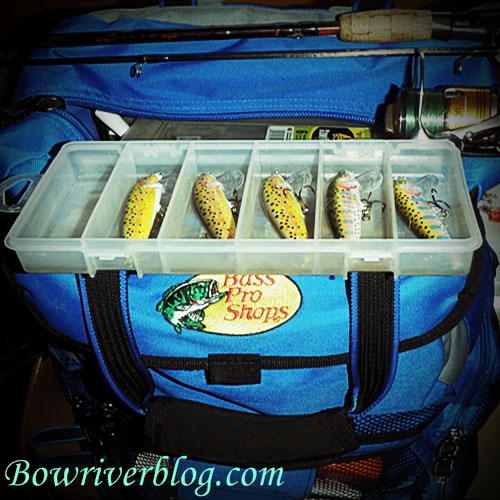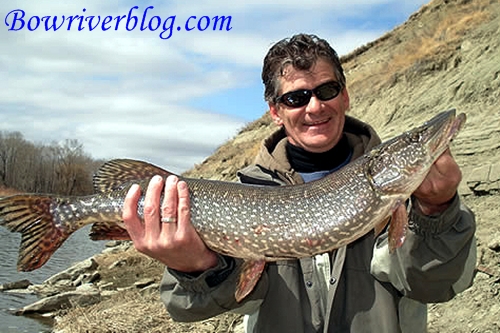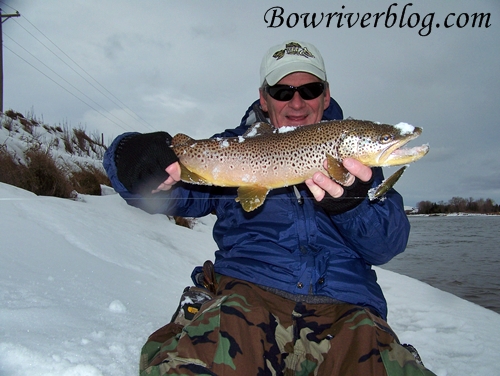Everything In Its Place
Back when I first started out fishing, I carried around a tackle box which held all my fishing gear. The standard goodies were in this unwieldy chunk of plastic, you know the red and white bobbers, the old packages of snelled hooks that have never been opened, and don’t forget those old jigs that have seven years of dust. and rust on them. When I opened this apparatus, the foul stench of old maggot jars would burn every nose hair in my nostrils. The odd living fly would make its getaway and buzz by my face scaring me half to death. The hinges would groan, barely opening, and duct tape would fill the holes where there was once plastic. If I walked and fished the banks of a river, I would have to put the tackle box down every time I made a cast. Usually these tackle boxes were passed down from father to son, or from grandfather to grandson in my case. My grandfather’s tackle box became my tackle box after several years of cob webs from sitting idle in the garage.
I hit the water and opened the rusty handle of the box, scrambling to get the mess of metal untangled and into the water. The decaying metal hooks would always find a way into my bulky fingers and foul words would exit my lips. I finally get to my favorite fishing hole and I’ve wasted my first hour of sunlight, attempting to make use of what was once an organized smorgasbord of shiny new fish snacks, waiting to be catapulted in front of the biggest Brown Trout I have yet to lay eyes on. I would lug this baby around on every fishing voyage with pride, making great use of it for many years, but one day it blew up and fell apart right there on the water’s edge. I was upset after the blow out. A Brown Trout in the river saw me shed a few tears. Faintly, I heard that trout whisper to me, “Just go get another box and quit your whining”. So off I went to the tackle shop to acquire a new box. I arrived and browsed the shelves like a kid does when he enters the candy store. My eyes wandered from side to side scanning the shelving like a hawk, looking at each box thinking “wow that’s cool”. I went up and down those two isles for at least thirty minutes before picking my new back pack, not a box. Welcome to the new world of tackle organization.
The fishing pro said he used a back pack and not one of those old boxes gramps handed me down. “But why a back pack” I asked the guy bewildered. He explained to me that I could hold numerous more pieces of tackle and keep it appropriately organized. Not only that, I could fish as I walked up the river not having to stop and drop the old box of plastic every time I made a cast. This would maximize my time on the water and increase my hook up rate he stated concisely. “It is perfect for all tackle sizes and shapes but you will need to buy some plastic tackle organizers to accompany the back pack”. Oh yes I need to spend more money now but pondering the thought of just putting the hooks directly into the back pack I opted to take his suggestion. I bought three plastic Plano tackle organizers which would suit the size of my fishing lures, paid for them and went home to get my tackle in order.
So let’s break it down! Today many tackle systems have removable dividers, or removable utility trays for easy access and convenient storage to make locating your favorite lure quick and efficient. I will write on my trays as to what they hold. For example, on each tray I write down what it contains to save time and get to my tackle fast and proficiently. A black permanent marker does this perfectly. I organize my lures as per the manufacturer of the lure. Rapala Countdowns go into one selected tray that holds six lures. Berkley’s into another tray and so on. I organize by color patterns for less digging around and more fishing. Rapala Rainbow Trout patterns all go into one tray, Brown Trout Rapala’s go into another and so on. I go one step further and set out my tackle according to where I will be fishing the next day, what the weather is like or what season of the year it is. The more together you are the more hooks ups you will encounter. Lastly I make sure all my hooks are checked and the split rings are firmly planted onto the body of the lure. It’s always fun until someone loses a fish!
Everything has a place and everything in its place! Getting organized is cheep and affordable which makes fishing that much more productive and comfortable. Thanks to the World Wide Web you can shop before you buy to get the best deal possible.




